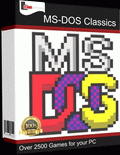
































Člověče, nezlob se!

Mensch ärgere Dich nicht is a German board game (but not a German-style board game), developed by Josef Friedrich Schmidt in 1907/1908. The game was issued in 1914 and sold about 70 million copies, driven by huge popularity among German troops serving in World War I. It is a cross and circle game with the circle collapsed onto the cross, similar to the Indian game Pachisi, the Colombian game Parqués, the American games Parcheesi, Aggravation, and Trouble, and the English game Ludo.
The name of the game literally translates to 'Man, don't get annoyed', though Mensch is gender neutral. The name derives from the fact that a peg is sent back to the 'out' field when another peg lands on it, similar to the games Sorry! and Trouble.
The game can be played by 2, 3 or 4 players – one player per board side (the original board has a pattern for 6 players on the reverse). Each player has 4 game pieces, which are in the 'out' area when the game starts, and which must be brought into the player's 'home' row. Early games had painted wooden pieces.
The rows are arranged in a cross pattern. They are surrounded and connected with a circle of fields, over which the game pieces move in clockwise direction. There are 3 fields nearest to each side of the board; the left one is the player's 'start' field (marked 'S') and the middle one leads to the 'home' row.
This means that each game piece enters the circle at the 'start' field, moves (clockwise) over the board and finally enters the 'home' row. The first player with all of their pieces in their 'home' row wins the game.
The players throw a die in turn and can advance any of their pieces in the game by the thrown number of dots on the die.
Throwing a six means bringing a piece into the game (by placing one from the 'out' area onto the 'start' field) and throwing the die again. In some variants, a player who has no pieces in the game has three tries to throw a six. If a piece is on the 'start' field and there are still pieces in the 'out' area, it must be moved as soon as possible. If a piece cannot be brought into the game then any other piece in the game must be moved by the thrown number, if that is possible.
Pieces can jump over other pieces, and throw out pieces from other players (into that player's 'out' area) if they land on them. A player cannot throw out his own pieces though, and cannot advance further than the last field in the 'home' row. A player cannot be thrown out if he is on his 'start' field.
How to play:
Click on the joystick icon in the Člověče, nezlob se! online emulator to see how to control the Člověče, nezlob se! game









































Comments